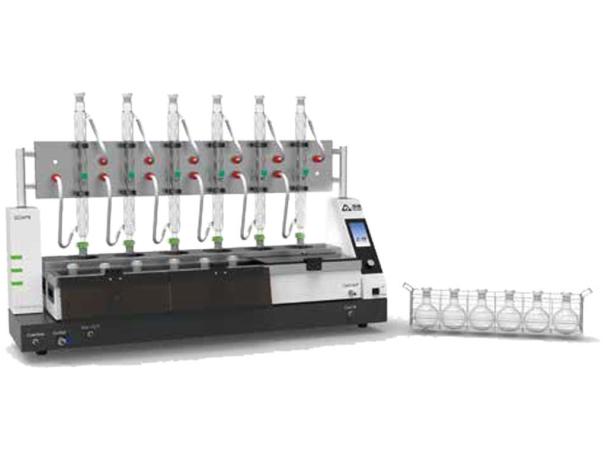A laboratory Array Fames (Fatty Acid Methyl Ester) apparatus is a specialized instrument used for the detection of fatty acid methyl esters (FAMEs) in biodiesel samples. FAMEs are the main components of biodiesel, a renewable fuel derived from vegetable oils and animal fats. The laboratory Array Fames apparatus is used to determine the composition of biodiesel samples, including the type and concentration of FAMEs present.
The Array Fames apparatus typically consists of a gas chromatograph (GC) and a mass spectrometer (MS). The sample is first injected into the GC, where it is vaporized and separated into its component parts. The separated components are then introduced into the MS, where they are ionized and detected based on their mass-to-charge ratio. The resulting mass spectra are used to identify and quantify the FAMEs present in the sample.
Uses of Array Fames apparatus
Array Fames apparatus is widely used in the biodiesel industry, as well as in academic and research laboratories, to determine the quality and composition of biodiesel samples. It provides a fast, accurate, and reliable method for determining the presence and concentration of FAMEs in biodiesel, which is important for ensuring the quality and performance of the fuel.
How does the laboratory Array Fames apparatus work?
The laboratory Array Fames (Fatty Acid Methyl Ester) apparatus works by using a combination of gas chromatography (GC) and mass spectrometry (MS) to detect and quantify the fatty acid methyl esters (FAMEs) in a biodiesel sample. Here is a general overview of how it works:
Sample preparation: The biodiesel sample is typically prepared for analysis by diluting it with a solvent and filtering it to remove any impurities.
Pretreatment for the detection of fatty acid methyl esters (FAMEs) in biodiesel samples is an important step in the analysis process. The pretreatment helps to ensure accurate and reliable results by removing any impurities or contaminants that may interfere with the analysis. One common pretreatment method is heating the sample in a water bath.
The heating step is performed in a water bath, which is a container filled with water that is heated to a specific temperature using a heating element. The biodiesel sample is placed in a sealed container, such as a test tube, and immersed in the heated water bath. The sample is heated for a specified time, typically ranging from 15 minutes to several hours, depending on the desired degree of pretreatment.
The heating step helps to remove any residual water, salts, or other impurities that may be present in the sample. The hot water also helps to reduce the viscosity of the sample, making it easier to handle and prepare for analysis.
After heating, the sample is typically filtered to remove any residual impurities or solids. The filtered sample is then ready for analysis using a laboratory Array Fames apparatus, which combines gas chromatography (GC) and mass spectrometry (MS) to detect and quantify the FAMEs in the sample.
Injection into GC: The prepared sample is injected into the gas chromatograph, where it is vaporized into a gas phase.
Column separation: The vaporized sample is then passed through a column filled with a stationary phase material. The different FAMEs in the sample are separated based on their boiling points and partitioning between the stationary phase and the gas phase.
Introduction into MS: The separated FAMEs are then introduced into the mass spectrometer, where they are ionized and transformed into charged particles.
Detection: The charged particles are then detected based on their mass-to-charge ratio. This generates a mass spectrum that can be used to identify and quantify the FAMEs in the sample.
Data analysis: The resulting data from the mass spectrometer is then analyzed to determine the composition and concentration of the FAMEs in the sample. The FAMEs are identified based on their mass-to-charge ratio and compared to known reference standards.
